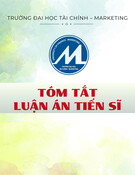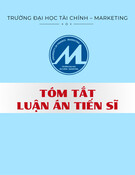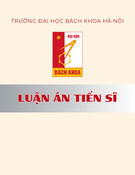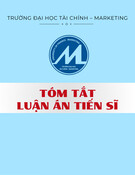
ECONOMIC CONSEQUENCES OF THE SIZE OF
GOVERNMENT IN AUSTRALIA
A thesis submitted in fulfilment of the requirements for the degree of Doctor of Philosophy
Julie Novak
B. Econ. (Hons) (Qld)
School of Economics, Finance and Marketing
College of Business
RMIT University
January 2013

ii
DECLARATION
I certify that except where due acknowledgement has been made, the work is that of the author alone;
the work has not been submitted previously, in whole or in part, to qualify for any other academic
award; the content of the thesis is the result of work which has been carried out since the official
commencement date of the approved research program; any editorial work, paid or unpaid, carried out
by a third party is acknowledged; and, ethics procedures and guidelines have been followed.
Julie Novak
January 2013

iii
ACKNOWLEDGMENTS
I wish to express my gratitude to my thesis supervisors, Professor Sinclair Davidson and Dr Steven
Kates, for their invaluable advice and assistance which was readily available when I required it. As
part of this, I thank my supervisors for encouraging me to undertake this rewarding path of intellectual
effort and self-discovery after many years expended contemplating the merits of participating in a
PhD program.
Completion of this thesis would not have been possible without the receipt of the Australian
Postgraduate Award and top-up RMIT University scholarships. I also acknowledge the efforts of the
School of Economics, Finance and Marketing in providing me with a casual lecturing position during
the duration of the PhD program. I thank the School, and RMIT University more broadly, for their
efforts in bringing these supports to bear.
I would like to thank the Institute of Public Affairs, and in particular its Executive Director Mr John
Roskam, for the patience and support accorded to me as I required leave to undertake and complete
major aspects of this thesis. We share the conviction that investigating the economic consequences of
public sector expansion is an indispensable component of the broader intellectual case for promoting
human liberty in all of its realms.
This thesis is dedicated to the late Milos Novakovic, who instilled within me at a young age the
importance of educational attainment, and the ethos of hard work as the means to harness my
intellectual capability and the realisation of personal objectives.

iv
TABLE OF CONTENTS
DECLARATION……………………………………………………………………………………….ii
ACKNOWLEDGEMENTS…………………………………………………………………………...iii
TABLE OF CONTENTS……………………………………………………………………………..iv
LIST OF FIGURES…………………………………………………………………………………..vi
LIST OF TABLES………………………………………………………………………………….viii
SUMMARY…………………………………………………………………………………………...1
CHAPTER 1 INTRODUCTION……………………………………………………………………..2
1.1 Background………………………………………………………………………….2
1.2 Research aims and objectives………………………………………………………..4
1.3 Definition of the state………………………………………………………………....9
1.4 Determinants of government size and growth……………………………………..12
1.5 Thesis outline…………………………………………………………………….…14
CHAPTER 2 PUBLIC SECTOR SIZE AND GROWTH IN AUSTRALIA: A HISTORICAL
CONTEXT…………………………………………………………………………………………….16
2.1 Background………………………………………………………………………….16
2.2 The eighteenth and nineteenth centuries……………………………………………..16
2.2.1 Settlement, economic development and state consolidation………………16
2.2.2 The ‘golden age’ and emergence of ‘colonial socialism’………………….18
2.2.3 The ‘state experiments’ of the late nineteenth century……………………..21
2.3 The twentieth century………………………………………………………………24
2.3.1 A new Australia: The first three decades……………………………………24
2.3.2 The 1930s Great Depression and economic recovery………………………29
2.3.3 ‘The octopus of control:’ Government during World War II……………….31
2.3.4 The era of post-war prosperity: 1949 to 1971………………………………35
2.3.5 Growth of government and economic stagnation in the 1970s…………….38
2.3.6 The economic reforms of the late twentieth century……………………….39
2.4 The twenty-first century……………………………………………………………..45
2.5 Conclusion………………………………………………………………………….50
CHAPTER 3 MEASUREMENTS OF AUSTRALIAN PUBLIC SECTOR SIZE…………………..52
3.1 Background………………………………………………………………………….52
3.2 Revenue………………………………………………………………………...……52
3.2.1 Definition……………………………………………………………………52
3.2.2 Data sources…………………………………………………………………55
3.3.3 Trends……………………………………………………………………….58
3.3 Expenditure………………………………………………………………………….67
3.3.1 Definition……………………………………………………………………67
3.3.2 Data sources…………………………………………………………………69
3.3.3 Trends……………………………………………………………………….70
3.3.4 National accounting treatment of public expenditures: A digression……….75
3.4 Regulation……………………………………………………………………………80
3.4.1 Definition……………………………………………………………………80
3.4.2 Data sources…………………………………………………………………82
3.4.3 Trends……………………………………………………………………….83
3.5 Public sector employment……………………………………………………………85
3.5.1 Definition……………………………………………………………………85

v
3.5.2 Data sources…………………………………………………………………86
3.5.3 Trends……………………………………………………………………….87
3.6 Other measures………………………………………………………………………92
3.6.1 Government dependency……………………………………………………92
3.6.2 Government ministries and agencies……………………………………….94
3.6.3 Policy decisions…………………………………………………………….96
3.7 Conclusion………………………………………………………………………….96
Appendix A: Summary of statistics and data sources for selected government size
measures……………………………………………………………………………………....98
CHAPTER 4 LITERATURE REVIEW……………………………………………………………102
4.1 Background………………………………………………………………………..102
4.2 Review of the theoretical literature………………………………………………..102
4.2.1 Neoclassical growth theory……………………………………………….102
4.2.2 Endogenous growth theory……………………………………………….107
4.2.3 ‘Optimal size of government’ theory……………………………………..111
4.2.4 Critical assessments………………………………………………………..117
4.3 Review of the empirical literature………………………………………………...119
4.3.1 Single-country studies……………………………………………………119
4.3.2 Multiple-country studies………………………………………………….127
4.3.3 Critical assessments………………………………………………………132
4.4 Conclusion………………………………………………………………………..135
CHAPTER 5 CONSEQUENCES OF PUBLIC SECTOR SIZE AND GROWTH: ESTIMATION
METHODOLOGY AND RESULTS………………………………………………………………137
5.1 Background………………………………………………………………………..137
5.2 Methodology and data…………………………………………………………….137
5.2.1 Overview………………………………………………………………….137
5.2.2 Model specification and data sources…………………………………….139
5.2.3 Unit root testing……………………………………………………………141
5.3 Results and analysis……………………………………………………………….142
5.3.1 Ordinary least squares analysis and results………………………………142
5.3.2 Simultaneous equation analysis and results………………………………149
5.4 Economic significance of the results……………………………………………..155
5.5 Conclusion………………………………………………………………………..157
Appendix B: Summary of statistics and data sources for regression analysis……………..159
Appendix C: Results of Augmented Dickey-Fuller unit root testing……………………..161
CHAPTER 6 CONCLUSION………………………………………………………………………163
6.1 Background………………………………………………………………………..163
6.2 Summary of findings……………………………………………………………..163
6.3 Contribution to literature………………………………………………………….167
6.4 Limitations of study……………………………………………………………….168
6.5 Directions for further research…………………………………………………….169
6.6 Conclusion………………………………………………………………………..170
REFERENCES…………………………………………………………………………………….172


























